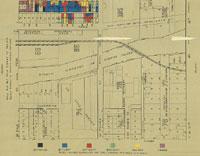

Polish, Jewish, and Black gangs were found in the expansive “West Side Wilderness.” The mini-societies that sprung up around gang life led to what Thrasher refers to as “interstitial” areas of Chicago-a gangland of deteriorating neighborhoods, shifting populations, and impoverished and disorganized slums.

His work focused not on the likes of Al Capone’s mob, but rather the gangs of second-generation immigrant youths who were thrown into the “seediest aspects of American culture,” writes Greg Dimitriadis in the journal Cultural Studies, Critical Methodologies. Thrasher estimated (conservatively) that there were 25,000 boys and young men in gangs in Chicago. As immigrants flooded to these urban centers, major shifts in social and spatial organization gave birth to gangs. “Some are good some are bad and each has to be considered to its own merits.”ĭuring the years between World War I and the Great Depression, many cities in the United States experienced a boom in both population and industrial production. “No two gangs are just alike,” Thrasher wrote. He also inscribed important locations and gang territories, such as “No Man’s,” “Gang Camp” and “Death Corner.” The gangs each had their own distinct characteristics, creating a mosaic of regions. He depicted parks, boulevards, cemeteries, and railroads in different shades of gray, and even showed if hang-outs had clubrooms by marking them in red triangles and circles.
Map of chicago 1930 full#
The map shows where certain gangs rule within the Gangland “empire,” which he explains isn’t just based on geography, but on “fissures and breaks in the structure of social organization.” The full map of Thrasher’s Chicago’s Gangland. Gangs are not only tied to their environment, but play a significant role in a city’s social distribution and structure, according to Thrasher. Chock-full of gray and red demarcations, the hand-drawn, multi-layered map provides detailed insider knowledge of Chicago’s gang activity. Published in 1927, Chicago’s Gangland is tucked into the back of Thrasher’s seminal book on urban crime and ethnography, The Gang, a Study of 1313 Gangs in Chicago. “Their distribution as shown on the accompanying map makes it possible to visualize the typical areas of gangland and to indicate their place in the life and organization of Chicago.” “No less than 1,313 gangs have been discovered in Chicago and its environs!” Frederic Thrasher wrote at the time. Between 19, one sociologist at the University of Chicago endeavored to track down and map the favorite haunts and hang-outs of more than 1,300 gangs for the project Chicago’s Gangland. It’s also included in “ We Built This: How Women Innovators Shaped the World,” a new digital activity guide from the Smithsonian Education team.In the 1920s, the streets of Chicago were home to hundreds of secret clubhouses and hideouts-home bases to thieving, violent gangsters. Williams’ artwork was recently acquired by the Cooper Hewitt, Smithsonian Design Museum.

Working with Chicago’s Sputnik Press, Williams cut out each zone and shook them up to create a new map, speculating how the map might be reshaped without housing policies based on human bias. Nicknamed “redlining,” regulations like these were used to restrict where homes could be bought by African Americans, segregate communities along racial lines, and provide unequal housing opportunities to whites during the Great Depression when Americans faced severe housing shortages. Red, which appears closer to pink here, was the color used to indicate neighborhoods that were home to African Americans-and deemed less worthy of investment. “Cadastral Shaking (Chicago v1)” reenvisions 1930s maps created by the Federal Housing Administration that were color-coded to differentiate neighborhoods where it was considered safer and more desirable to insure mortgages.


 0 kommentar(er)
0 kommentar(er)
